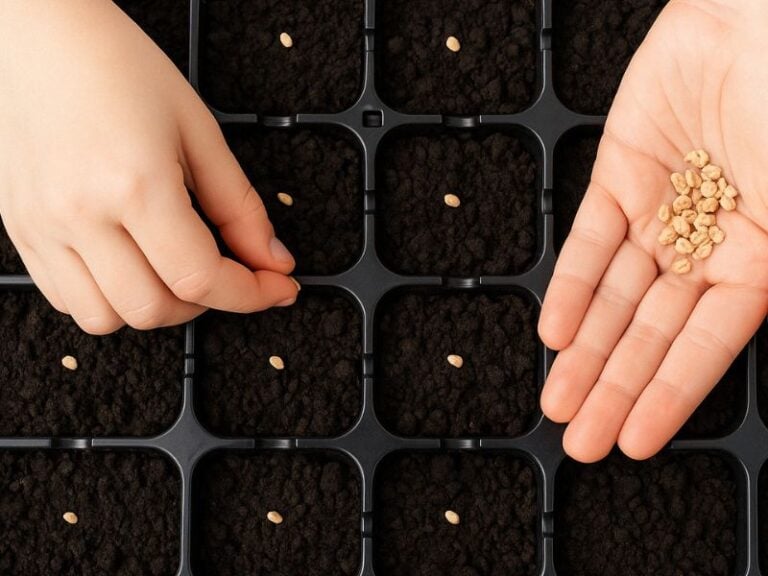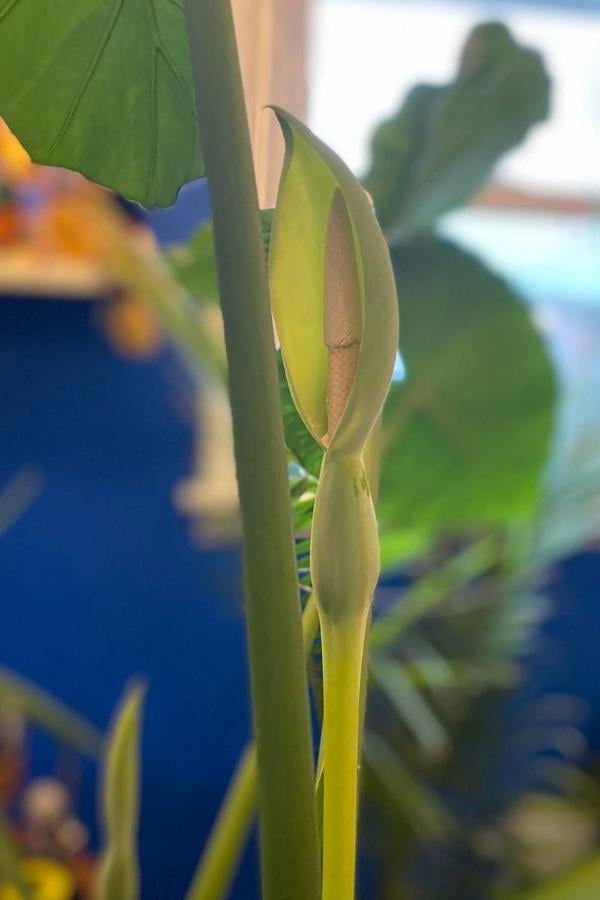ZZ plants are beautiful indoor plants that do not need a lot of special care. Yet, as a plant lover myself, I want to provide the best possible care for my plants, no matter how durable they are.
That includes knowing how to fertilize them and whether they need fertilizer at all.
ZZ plants can do just fine with a minimum dose of fertilizer. However, applying general liquid fertilizer will give your ZZ plants some extra boost.
Further in the text, I will dive into the actual process of fertilization. You will learn about the different types of fertilizers and how to use them. Get ready to help your green friends live their healthiest, shiniest lives.
Contents
What Do You Feed ZZ Plants?
As I have mentioned before, ZZ plants can grow fine without any additives. They are slow growers and that should not concern you.
Regular watering can help these plants grow faster and they do not need any additives to survive.
Yet, if you choose to fertilize them, you should make sure not to overdo it. A balanced liquid fertilizer would be ideal for these simple plants.
The one I use and highly recommend is a 5-5-5 fertilizer, or a diluted 10-10-10 one. Once you decide to feed your plants, make sure to dilute the fertilizer and add it after the watering. Applying a strong fertilizer could burn and damage the plant.
Types of Fertilizers for ZZ Plant
Many of you might be wondering if there is any difference between the types of fertilizers. I am here to tell you that choosing the right fertilizer is important for the growth and survival of your ZZ plants.
But, don’t worry. I will help you understand each of them and help you provide your green buddies with the best care possible.
Liquid Fertilizers
These are the best option for giving your ZZ plants that extra boost. When it comes to these types of plants, it is important to dilute the fertilizer before adding it to the soil.
Diluting it makes it easy to control the number of nutrients you are giving to your plant. They do not need a lot of it and too much could harm the roots and ZZ’s foliage.
Slow-release Fertilizers
Decompose and discharge nutrients into the soil over time. Slow-release fertilizers are usually applied once a year. That makes them perfect for lazy or forgetful plant owners.
But, for ZZ plants, they would be hard to control, since you cannot dilute them and they might be too harsh on the root. Because of that, liquid fertilizers are a much better and safer option.
Solid Fertilizers
These are usually granulated or powdered. They are great for outdoor gardening, but I would not recommend using them for your ZZ plants.
It is difficult to track the number of nutrients your plant is getting with these types of fertilizers. They release all the nutrients at once after you water the soil and would do more harm than good to this type of plant.
Now, Based on the ingredients, all these fertilizers are either organic or synthetic. Don’t worry, this is not rocket science.
I am here to help you understand the difference between the two and what would be the best option for your ZZ plants.
Organic Fertilizers
The components of these types of fertilizers are not processed. Because of that, it would take longer for your ZZ plant to take all the nutrients.
Organic fertilizers break down in the soil. Due to that, these types of fertilizers treat the soil more than the actual plant.
Synthetic Fertilizers
These fertilizers are composed of processed ingredients. Processed materials allow your ZZ plant to uptake the nutrients right away.
The chemicals in these fertilizers make them stronger than the organic ones. Because of that, you should always dilute them before applying.
I prefer to use synthetic fertilizers for my ZZ plants. They are easier to uptake and provide more nutrition.
You May Also Enjoy: How to Save Zz Plant from Root Rot (Step by Step)
When to Feed ZZ Plants
Now that we have covered types of fertilizers, it is time to learn when is the best time to treat your leafy friends. Like it is the case with most indoor plants, the best time to fertilize is during the growing season.
It is important not to over-fertilize ZZ plants. Even in nature, they are made to be strong and resistant.
The lack of fertilization would create a more natural habitat for them. The main growing period for ZZ plants is usually from April to August.
Fertilizing in Spring
If you choose to fertilize your ZZ plants during the growing period, it is perfectly fine to do so every month. You should start fertilizing your plants in March or April.
For the first couple of months, make sure to use half the recommended strength. It is best to use a 5-5-5 fertilizer, to prepare the plant for further fertilizing.
You should always make sure to water the soil first before using any chemicals. The water will protect the roots of the plant from being damaged and burned by the chemicals.
Fertilizing in Summer
When summer arrives, it is safe for you to switch to a stronger fertilizer. Keep in mind that ZZ plants do not require fertilizing.
A diluted 10-10-10 fertilizer would be just enough for them. If you are using a liquid fertilizer, it is completely fine to apply it monthly during the growing period.
Fertilizing in Winter
Winter fertilization is not recommended. During this period, ZZ plants are not actively growing. They are not in the need for any sort of fertilizer, as it could damage and burn the roots, as well as lead to brown leaves.
However, if you are living in a warmer climate, you can continue fertilizing your ZZ plants.
Fertilizer Application Tips and Common Mistakes
Fertilizing can be tricky if you are not informed enough about your plants and their needs.
When it comes to ZZ plants, they are rather durable and hard to kill. There are still some tips you should know before starting your fertilizing journey.
1. Little goes a long way
This is the most important tip I could give you. Less is more. Your plant will be happier with a diluted fertilizer every couple of months. You do not have to apply a harsh one every other week.
People often make this mistake because they think they are doing their plants a favor. I know you want the best for your ZZ plants, but do not over-love them.
2. Spring is the best time to start fertilizing
This is when ZZ plants start their process of active growth. Like kids hitting puberty, they need their vitamins. When spring and summer arrive, it is time to give your plants some extra love.
3. Forget about your fertilizer during winter
They do not need it. Winter is when you should let your ZZ plants rest because they are not in the period of active growth. Applying fertilizer at this period could lead to brown leaves and burned roots.
4. Synthetic fertilizers are a beginner’s best friend
Dilute it and apply it. It is that simple. Processed ingredients are all ready for your ZZ plant to uptake. They are formulated with the perfect amount of nutrients and all you have to do is apply it and let your plant enjoy.
Frequently Asked Questions
How can I make my ZZ plant grow faster?
In general, ZZ plants are natural slow growers. There is nothing much you can do to make them rapidly grow faster.
However, fertilizing them can help them grow larger and stronger. These plants can go months without water, but regular watering will help them grow a bit faster.
Be careful not to over-water them, however, since they prefer dry conditions.
Why do ZZ plant leaves turn yellow?
Yellow leaves in ZZ plants are usually a sign of nutrient deficiency. The causes could be various, but yellowing is most likely a sign of nitrogen deficiency.
This usually occurs in spring when plants are actively growing. Applying fertilizers high in nitrogen will remedy the problem.
It will help your ZZ plant recover faster, but make sure not to over-do it and to dilute the fertilizer first.
Do ZZ plants like humidity?
They do not need a lot of sunlight and room temperatures work fine for them. They grow best in humid climates, but the typical indoor humidity will be just enough for them.
They do not need a lot of it to grow and be healthy and they can adapt to just about anything.
If you are keeping your ZZ plant in an air-conditioned room, it is best to mist the leaves.
That way you create some sort of humidity, which will be enough for them to thrive.
How do you revive a dying ZZ plant?
If your ZZ plant is dying, you should first inspect it and cut the damaged leaves. The next step should be to take the plant out of the pot and clean the roots from the soil.
You should loosen the root so that they are not growing into a root ball. Replace the soil from the pot with the new one and put the plant in it gently, so that you do not damage the roots.
Water the plant and remember that you should not over-water it. ZZ plants survive better in dry conditions and over-watering can be detrimental.







